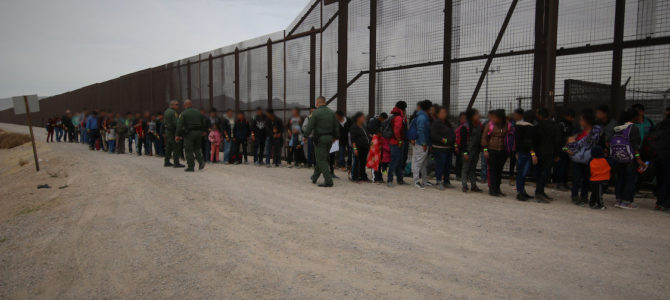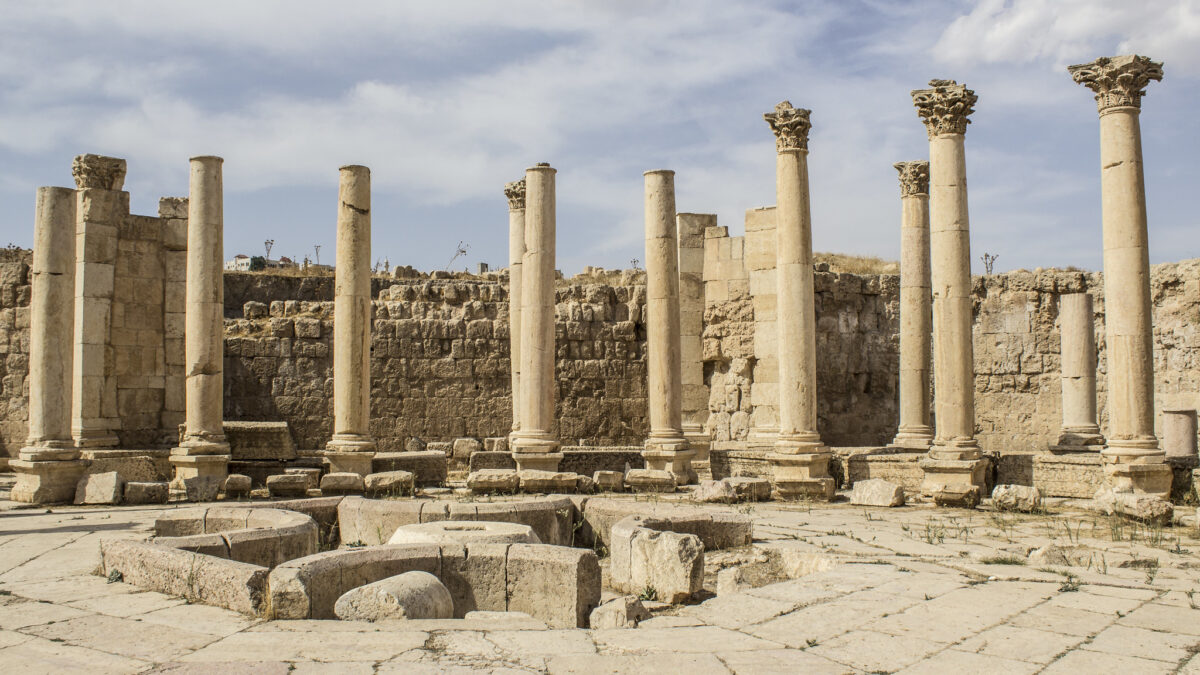
Let’s get something straight: the deal announced last week between the United States and Mexico to avert tariffs and curb the border crisis isn’t going to work. Unveiled as a diplomatic triumph, the deal says Mexico will send 6,000 National Guard troops to the Guatemalan border and allow Central American migrants to remain in Mexico pending their asylum claims in the United States.
These are almost entirely face-saving measures for both the Trump administration and Mexican President Andrés Manuel López Obrador. They have the virtue of making it seem like the United States, through tough diplomacy and the threat of punitive tariffs, has convinced Mexico to crack down on human smuggling and illegal immigration. But in practice they amount to smoke and mirrors.
The deal, touted by Trump officials on Monday as a breakthrough, will likely have little long-term effect on the actual numbers of migrants arriving at the U.S. border, or on the underlying conditions prompting so many Central Americans to leave their homes in the first place
The Mexican National Guard Does Not Inspire Confidence
To understand why, consider the measures themselves. The deployment of the Mexican National Guard, a force that came into being less than a year ago as a way to fight organized crime, is not a serious move. López Obrador created the 60,000-member Guard shortly after taking office last year as a corrective to the failed policy of his predecessor, President Enrique Pena Nieto, whose federal paramilitary police force, or gendarmerie, proved totally ineffective.
The Guard is a hybrid organization, comprising officers from the Federal Police and members of the army and navy’s policing units, but run by civilian leadership in the Ministry of Security and Citizen Protection. That leadership is untested, and sending a 6,000-man detachment of troops to the southern Mexican state of Chiapas, without any clear policy directives or infrastructure for detaining migrants, seems to be asking for more of the grave human rights abuses, including the disappearance of minors, that the Army and Navy have been implicated in along Mexico’s northern border.
Beyond questions of corruption and abuse is the matter of simple competence. How exactly is the Guard going to stop illegal immigration from Guatemala along a porous 541-mile border that almost entirely lacks the security features of our border with Mexico? As Todd Bensman of the Center for Immigration Studies noted in a recent post, the Mexicans shouldn’t expect any help from Guatemalan officials, which they will certainly need to be effective.
“That’s because Guatemala’s leadership, border patrol, and police forces all have been neck-deep in the smuggling industry for years, despite ongoing corruption investigations and a contentious national election campaign,” writes Bensman, adding that the smuggling infrastructure in Guatemala and southern Mexico is “entrenched, dynamic, and politically connected, having grown uninhibited for decades and with citizen populations on both sides depending on it for sustenance.”
Mexican security forces might not even try to take on sophisticated and well-financed smuggling networks and focus instead on relatively easy-to-target caravans. Last week, Mexican authorities arrested two caravan organizers, including the head of advocacy group People Without Borders, and charged them with human smuggling. The irony is that migrants join caravans because they can’t afford to hire smugglers, and traveling with a large group helps protect them from predation by cartels and corrupt officials.
One human rights advocate told the Wall Street Journal that the security forces “are taking on the poorest migrants who travel in caravans or alone, but they are doing little to dismantle criminal networks.” The poorest migrants traveling in caravans certainly make for easier enforcement targets—especially if the goal is to make it appear that Mexican officials are cracking down on illegal immigration.
How Exactly Will ‘Remain In Mexico’ Work?
The second measure in the deal involves a border-wide expansion of the Migrant Protection Protocol program, informally known as “Remain in Mexico,” which forces Central American asylum-seekers to wait in Mexico while their cases work their way through U.S. immigration court.
This is the part of the deal we know least about. How exactly will it work, even on a practical level? Since the program began this year, only about 10,000 asylum-seekers have been sent back to Mexico. In recent weeks, U.S. authorities have been sending about 250 a day back. But Vice President Mike Pence tweeted that Mexico had agreed to allow “ALL illegal immigrants from Central America to remain in Mexico pending their asylum claims.”
All? Right now, U.S. Border Patrol is arresting on average more than 4,200 people a day, about 60 percent of which are asylum-seekers from Central America. Does the vice president mean to imply that the United States is going to send thousands of asylum seekers a day back to Mexico?
Whatever one thinks of the policy, that’s simply not going to happen. Mexico doesn’t have the resources to house that many people in its northern border cities, which are themselves some of the most dangerous cities in the world, where migrants are often targeted for kidnapping and extortion.
Even if the United States does start sending thousands of Central Americans back to Mexico every day, many of them, facing horrible conditions and grave danger, will simply turn around and try to sneak into the United States without being detected. That will further tax U.S. Border Patrol and add to the chaos along the border.
More Than Anything, the Deal Is a PR Stunt
Beyond the specific reasons these measures likely won’t do much to stem the flow of illegal immigrants from Central America is the larger problem of placing the onus for solving the migrant crisis on the Mexican state, whose institutions are notoriously weak and susceptible to corruption. Mexican civil society is in crisis. The last two years have seen a record number of homicides in Mexico, with more than 130 political candidates assassinated in the months leading up to national elections last year.
The reality is that the government of President López Obrador is no more in control of migrant smuggling networks in Mexico than the U.S. Border Patrol is, and unless America is prepared to give substantial and direct aid—and Mexico is prepared to accept it—asking Mexico to solve this problem on its own is pure fantasy.
The deal might nevertheless accomplish its near-term goal of making it seem like something is being done about the crisis. The number of border apprehensions is probably going to drop in June after reaching nearly 133,000 in May, including more 100,000 families and unaccompanied minors. This is because of the heat, and it follows a regular pattern. Arrests along the southwest border have dropped every June since 2000—with the exception of 2017, when the numbers were at their lowest point in a half-century.
That means next month when the numbers drop, the Trump administration can claim a big victory regardless of what Mexico does. That, of course, is the real purpose of the deal.









